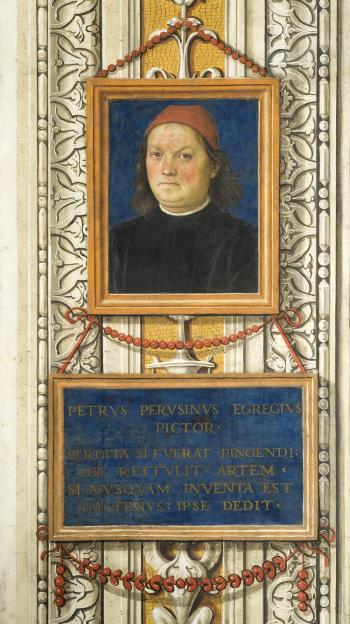Pietro Perugino, Self-portrait
Historic seat of the Guild of Merchants and Money Changers

The creator of the frescoes in the Audience Hall, Pietro Perugino, painted himself into the section separating the two large lunettes featured on the long wall. The decision to position himself at the focal point of these righteous figures of antiquity, shows a unique self-awareness of the painter’s own weighty role whereby he is no longer just a simple, albeit talented, craftsman wielding a paintbrush but also, and perhaps above all, an actual protagonist of the sociocultural history of his own era.
Beneath the painting which, in a superb optical effect, portrays the protagonist of this astonishing work of decoration, there is a Latin epigram which can be read as follows [an approximate translation] “The illustrious painter Pietro Perugino. Should the art of painting have been lost, he has rediscovered it; should it never have been invented anywhere, he has created it himself.” It’s interesting to note that the Latin term “egregius” conferred on the painter is no hazard. “egregius” literally means “outside the crowd” (“ex grege”) showing the painter positions himself beyond the masses in virtue of his unquestionably exceptional skill.